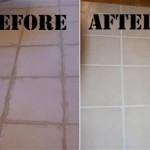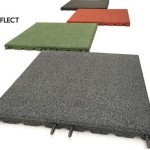How to Install Vinyl Plank Flooring on Concrete Floor
Installing vinyl plank flooring on a concrete floor is a great way to improve the look and feel of your home. Vinyl plank flooring is durable, easy to clean, and comes in a variety of styles and colors. It's also relatively easy to install, making it a great option for do-it-yourselfers. ### Tools and Materials You'll Need - Vinyl plank flooring - Underlayment - Tape measure - Utility knife - T-square or straight edge - Spacers - Hammer or mallet - Block of wood - Roll of quarter-round molding - Nails or adhesive ### Step 1: Prepare the Concrete Floor The first step is to prepare the concrete floor. This means cleaning the floor thoroughly and removing any dirt, dust, or debris. You should also fill in any cracks or holes in the floor using a patching compound. Once the floor is clean and smooth, apply a thin layer of concrete primer. This will help the underlayment and vinyl planks adhere to the floor. ### Step 2: Install the Underlayment Once the concrete primer has dried, you can install the underlayment. The underlayment will provide a cushion for the vinyl planks and help to prevent them from cracking. Start by rolling out the underlayment over the concrete floor. Cut the underlayment to fit the room, and then tape the seams together using duct tape. ### Step 3: Install the First Row of Vinyl Planks The next step is to install the first row of vinyl planks. Start by measuring the width of the room and cutting the first plank to fit. Then, place the plank in the corner of the room and tap it into place using a hammer or mallet. Continue installing the first row of planks, working your way across the room. Leave a small gap between the planks and the wall to allow for expansion. ### Step 4: Install the Remaining Rows of Vinyl Planks Once the first row of vinyl planks is installed, you can begin installing the remaining rows. Start by placing a spacer at the end of the last plank in the first row. Then, place the next plank in the row and tap it into place. Continue installing the remaining rows of vinyl planks, working your way across the room. Leave a small gap between the planks and the wall to allow for expansion. ### Step 5: Trim the Excess Vinyl Planks Once you have installed all of the vinyl planks, you will need to trim the excess planks around the edges of the room. Use a utility knife to score the planks along the edge of the wall. Then, snap the planks off using a block of wood. ### Step 6: Install the Quarter-Round Molding The final step is to install the quarter-round molding around the edges of the room. This will cover the gap between the vinyl planks and the wall. You can nail or adhesive the quarter-round molding in place. ### Tips for Installing Vinyl Plank Flooring on Concrete Floor - Make sure the concrete floor is clean, smooth, and dry before installing the vinyl planks. - Use a level to make sure the underlayment is level before installing the vinyl planks. - Leave a small gap between the vinyl planks and the wall to allow for expansion. - Use a hammer or mallet to tap the vinyl planks into place. - Be careful not to overtighten the nails or screws when installing the quarter-round molding.
How To Prepare A Concrete Floor For Vinyl Flooring Parrys

Easy Ways To Install Vinyl Plank Flooring On Concrete

Tips For Installing Vinyl Plank Over Concrete Floors Lemon Thistle

Easy Ways To Install Vinyl Plank Flooring On Concrete

How To Install Vinyl Or Laminate Floors In A Basement Over Concrete Slab

How To Install Vinyl Plank Flooring As A Beginner Home Renovation

Floor Prep On Concrete For A Vinyl Plank Installation

Tips For Installing Vinyl Plank Over Concrete Floors Lemon Thistle

Tips And Tricks For Installing Vinyl Plank Over Concrete Floors Riverbend Interiors

Lvp Flooring Installation How To Install Luxury Vinyl Plank In A Basement Diy
See Also







